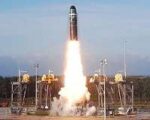The Royal Navy is reviving dedicated mine sweeping capabilities after a decade-long hiatus, leveraging autonomous platforms to modernize its mine countermeasures (MCM) strategy. At DSEI 2025, the UK Ministry of Defence (MoD) and industry partner Atlas Elektronik UK unveiled operational details of the ARCIMS-based solution that will form the backbone of this renewed capability.
Background: From Legacy Sweepers to Autonomy
The Royal Navy retired its last dedicated mine sweeper in 2005 with the decommissioning of the Ton-class vessels. Since then, it has relied primarily on mine hunting techniques using sonar-equipped platforms such as the Hunt-class and Sandown-class ships. However, these methods are optimized for detecting and neutralizing individual mines rather than clearing large areas rapidly.
Recognizing this gap—especially in light of evolving maritime threats like smart mines and contested littorals—the Royal Navy initiated Project Wilton in 2019 to explore autonomous MCM solutions. The project culminated in trials involving various unmanned surface vessels (USVs), culminating in the selection of Atlas Elektronik UK’s ARCIMS (Atlas Remote Combined Influence Minesweeping System) as a core component of future sweeping operations.
ARCIMS Platform: Modular Autonomy for MCM
The ARCIMS system is a modular USV designed specifically for mine countermeasures roles including influence sweeping, route survey, and remote sensing. The platform is approximately 11 meters long with a displacement around 10 tonnes and can be operated remotely or semi-autonomously from shore or motherships.
Key features include:
- Influence sweep payloads: Magnetic and acoustic generators simulate ship signatures to trigger mines safely.
- Autonomous navigation: GNSS-aided autopilot with obstacle avoidance algorithms enables precision path following during sweep operations.
- Multi-role flexibility: Payload bays can be swapped for sonar arrays or other mission modules.
The system is already in use by several navies including those of Finland and Germany under NATO interoperability frameworks. For the Royal Navy, ARCIMS will initially operate from shore facilities before being integrated aboard larger platforms like RFA Stirling Castle—a Multi-Role Ocean Surveillance Ship (MROSS) repurposed for MCM command-and-control functions.
Operational Concept: Distributed Sweeping from Motherships
The reintroduction of sweeping does not signal a return to legacy manned sweepers but rather reflects a shift toward distributed autonomous operations. Under this concept:
- A mothership such as RFA Stirling Castle deploys multiple ARCIMS USVs into a suspected mined area.
- The USVs conduct influence sweeps autonomously while transmitting telemetry back to operators via secure datalinks.
- Sweep results are fused with sonar data from other platforms to generate real-time clearance maps.
This approach minimizes risk to personnel while enabling faster area clearance compared to traditional hunting-only methods. It also allows operations in higher-threat environments where manned vessels would be vulnerable to attack or detection by adversary forces.
DSEI Showcase and Future Plans
At DSEI 2025 in London, Atlas Elektronik UK demonstrated an operational ARCIMS unit equipped with both magnetic coil arrays and acoustic generators mounted on modular skids. The system was shown operating alongside Saab’s Sea Wasp remotely operated vehicle (ROV), highlighting potential integration between sweeping and identification/neutralization assets within a single task group architecture.
The Royal Navy confirmed that two ARCIMS units are already operational under Project Wilton out of HMNB Clyde. A third unit is expected by early 2026 as part of broader investment into autonomous maritime systems under the MoD’s Mine Hunting Capability (MHC) program—a £184 million initiative launched in partnership with France under the Lancaster House treaties framework.
Strategic Implications for NATO Maritime Operations
The reintroduction of sweeping aligns with NATO’s renewed emphasis on securing sea lines of communication (SLOCs) against hybrid threats including naval mines deployed by state or proxy actors. Russia’s use of sea mines near Ukrainian ports since early 2022 has reignited interest across European navies in scalable MCM solutions that do not require large crewed fleets.
By fielding modular USV-based sweepers like ARCIMS, the Royal Navy enhances its ability to contribute rapidly deployable assets to multinational task groups operating in chokepoints such as the Baltic Sea or Strait of Hormuz. Additionally, interoperability trials under NATO’s Centre for Maritime Research & Experimentation (CMRE) have validated data exchange standards between UK systems and allied C4ISR networks—critical for joint operations where shared situational awareness is essential.
Challenges Ahead: Integration and Doctrine Development
While promising technologically, integrating autonomous sweepers into existing naval doctrine presents challenges:
- C4ISR integration: Ensuring seamless data flow between USVs, motherships, headquarters units remains an ongoing effort involving Link-16/STANAG compliance testing.
- Tactical employment: Developing TTPs (tactics, techniques & procedures) for deploying sweepers alongside hunters without mutual interference requires extensive simulation and live trials.
- Manning models: While USVs reduce exposure risk, they still require trained operators ashore or afloat familiar with both autonomy management and MCM principles—demanding new training pipelines within Fleet Operational Sea Training (FOST).
Conclusion
The return of mine sweeping capability via autonomous systems marks a significant evolution in how the Royal Navy addresses underwater threats. Rather than reverting to legacy platforms, it has embraced modularity and autonomy through systems like ARCIMS—enhancing flexibility while reducing risk exposure. As these capabilities mature within NATO frameworks and integrate into broader maritime doctrine, they will play an increasingly vital role in contested littoral zones worldwide.








